Top 5 Types of Kitchen Cabinet Materials
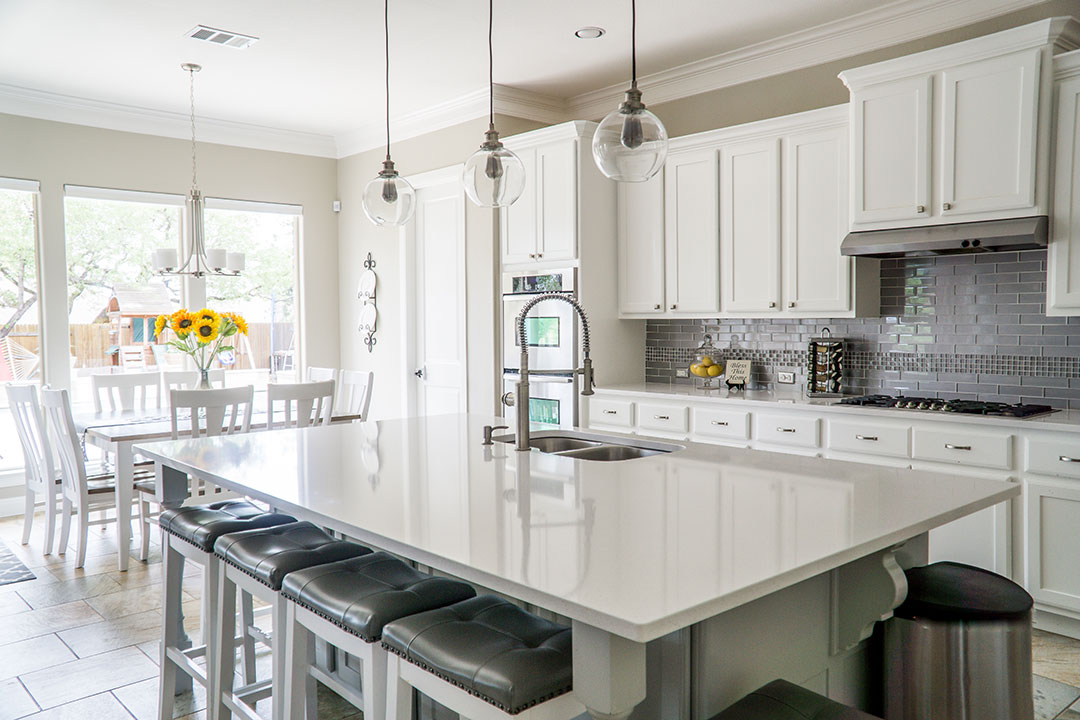
When you’re investing in a kitchen renovation, you want to make sure you’re choosing the right kitchen cabinets. Based on how you use the space, your budget, and your style preferences, there are so many different types of kitchen cabinet materials to choose from.
Kitchen Cabinet Material Comparison Guide
To help you make the best cabinetry choice for your kitchen remodel, we discuss the pros and cons of the top types of kitchen cabinet materials below.
Solid Wood Cabinets
Even within the category of solid wood cabinets, there are so many different species to choose from that each offers its own unique coloring, grain patterns, durability, and more. To help you decide if solid wood cabinets are right for your kitchen, let’s discuss their pros and cons.
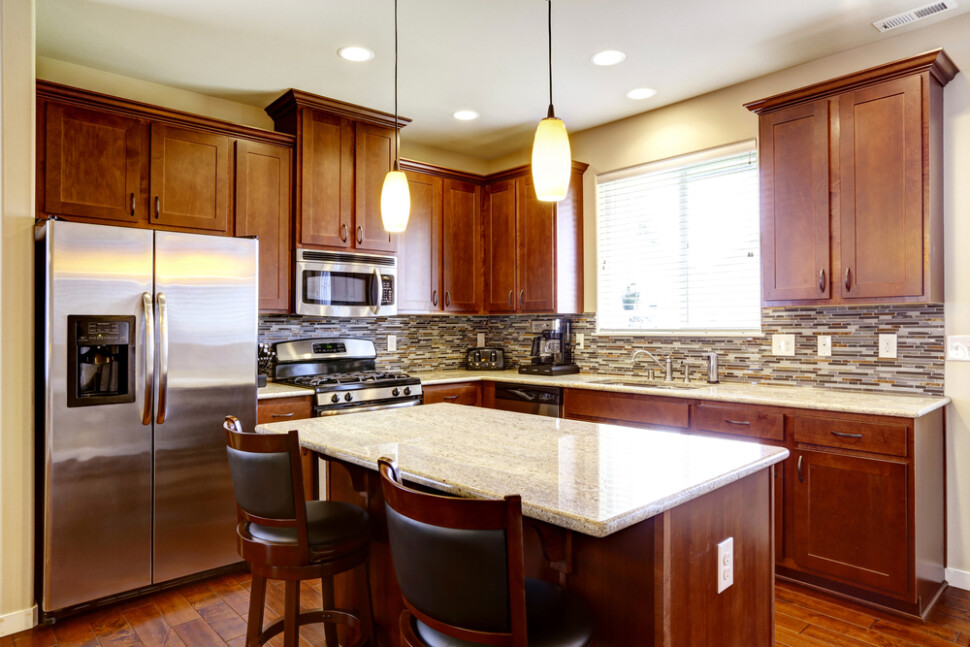
Pros
Solid wood cabinets are one of the most popular cabinet choices because they’re naturally beautiful, durable, versatile, and long-lasting. Surface scratches can easily be sanded or buffed out, and the material overall is resistant to damage.
Wood is a natural material, which means that each piece offers its own uniquely beautiful grain patterns and coloring. With so many options to choose from, this versatile material offers a variety of styles to match your home’s design. Species include maple, cherry, walnut, white oak, red oak, hickory, and more.
Cons
All of this natural beauty and durability can come at a price. One con of this type of kitchen cabinet material is that it’s a more expensive option than some of the others on this list.
Solid wood cabinets can also be prone to fading or darkening depending on the amount of light exposure they receive. If not cared for properly, they’re susceptible to water damage which would cause the wood to warp, shrink, and expand.
Wood Veneer Cabinets
Wood veneer cabinets are one of the top types of kitchen cabinet materials because they combine the beauty of wood with cost-saving manufacturing methods. Decorative wood veneer is manufactured by peeling sheets of beautiful wood off a solid wood log. These decorative veneer pieces are then bonded to a core material like particleboard, plywood, or MDF.
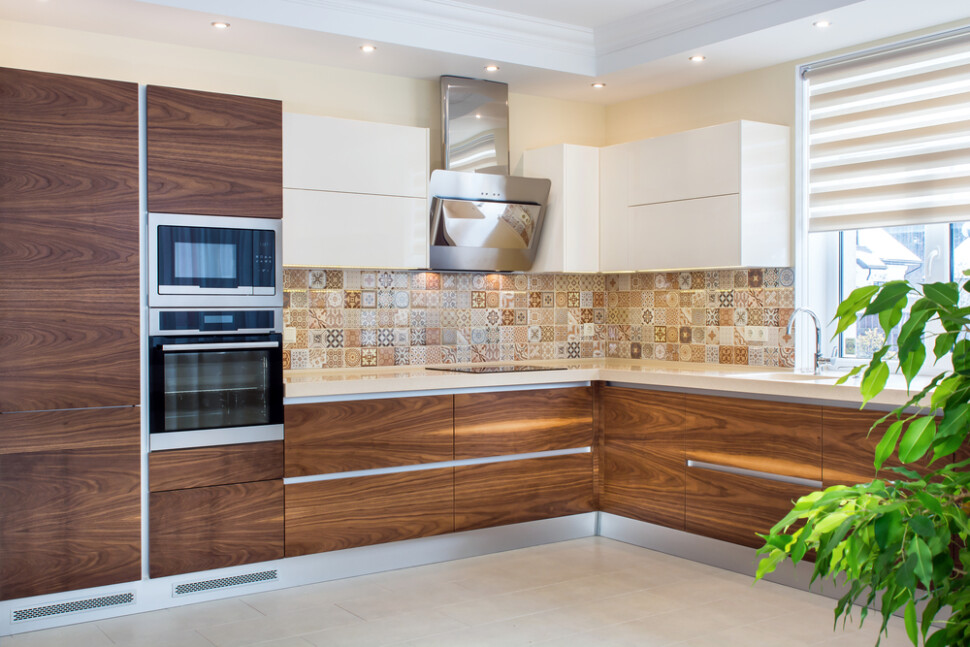
Pros
With wood veneer cabinets, homeowners benefit from the beautiful appearance of natural wood materials while also spending less than they would on solid wood cabinets. Inexpensive core materials provide a sturdy and durable base for your cabinets while also enabling you to save money compared to the cost of solid wood cabinets.
Cons
In the same way that solid wood cabinets are susceptible to water damage, so are wood veneer cabinets. This means that if exposed to water, wood veneer cabinets could warp, shrink, and expand. This water damage would ruin the structural integrity and appearance of your cabinets.
Laminate Cabinets
Laminate, also referred to as high-pressure laminate, is constructed by taking layers of kraft paper and a top layer of decorative paper, dipping it in a protective resin, and fusing it together to create a hard, highly durable, and scratch-resistant material. This material is then laminated to a core material like MDF, particleboard, or plywood.
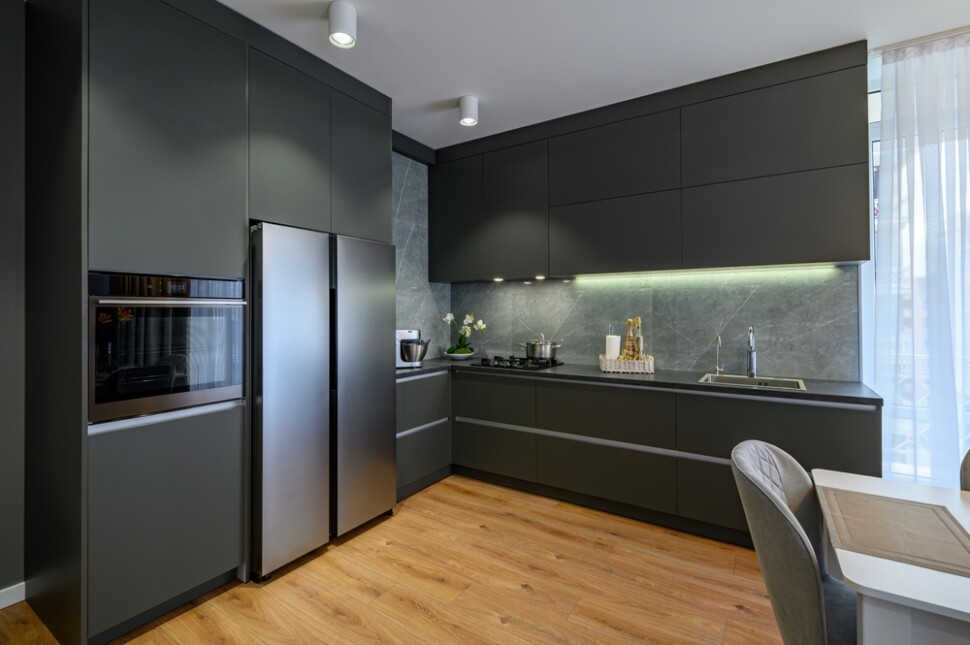
Pros
Laminate provides a variety of decorative options. Whether you want a solid color or a realistic-looking wood grain, the technology behind laminate colors, patterns, and textures continues to evolve.
In addition to providing an aesthetically pleasing appearance, laminate cabinets are also less expensive than solid wood and highly durable. The surface is easy to clean, scratch-resistant, heat-resistant, and stain resistant. Each laminate manufacturer provides a very detailed information sheet on how their brand of laminate performs under every type of kitchen stressor.
Cons
While laminate does provide a variety of benefits, it’s also a kitchen cabinet material that cannot be repaired once it’s been chipped, melted, or warped. The laminate and its core material would have to be replaced.
Melamine Cabinets
Melamine combines the decorative properties of laminate with the lightweight and inexpensive core properties of particleboard. A particleboard core is made by fusing wood shavings and chips together with resin under high heat and pressure to create a durable core material. This particle board core is then finished with a decorative paper layer over layers of kraft paper, and then a protective resin layer on top. These layers are fused together directly on top of the particle board, which creates an inexpensive and moderately durable decorative surface for your kitchen cabinets.
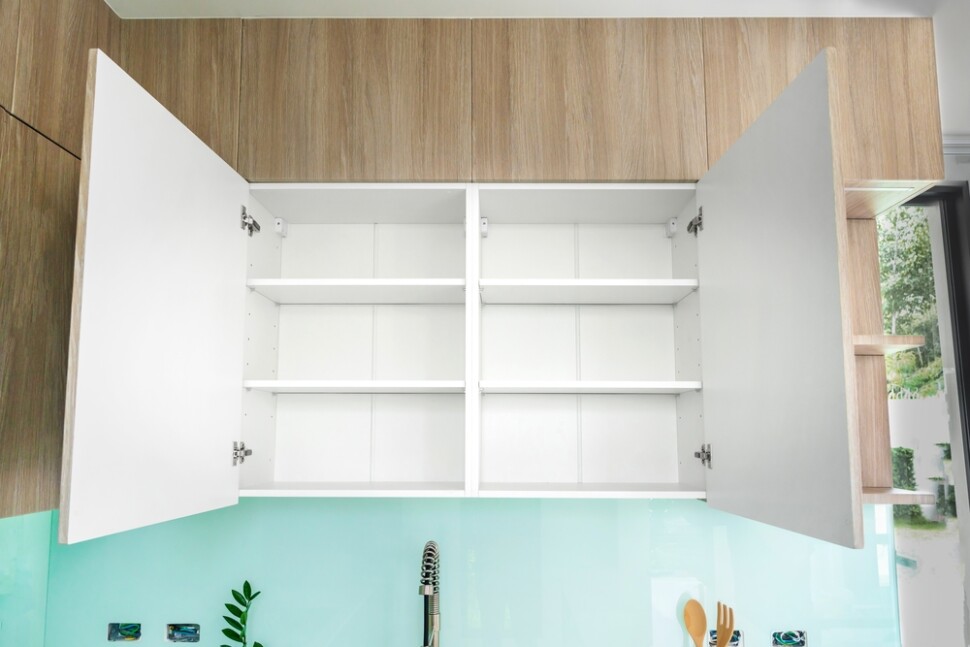
Pros
Melamine provides a way to have the decorative appearance of real wood while also being cost-effective, lightweight, and easily machinable. Similar to laminate, another pro of melamine kitchen cabinets is that it is available in a seemingly endless array of decorative options. Technology has continued to advance, and this has resulted in very realistic-looking decorative options that mimic the appearance of natural wood.
While the material isn’t the most durable option, it is moderately durable and provides a decent amount of scratch resistance that busy kitchen areas require.
Cons
The cons of melamine include that it can’t be refinished. Once it’s finished with that decorative material, it cannot be sanded and refinished into something else. You would need to start over with an entirely new material.
This type of kitchen cabinet material is a great choice for homeowners looking for a beautiful decorative surface that is still durable and within their budget.
MDF Cabinets
MDF is a core material that is made by fusing together wood fibers with resins and glue under high heat and pressure. The result is a durable core material. The MDF is then finished with a decorative surface like veneer or laminate, although it can also be painted.
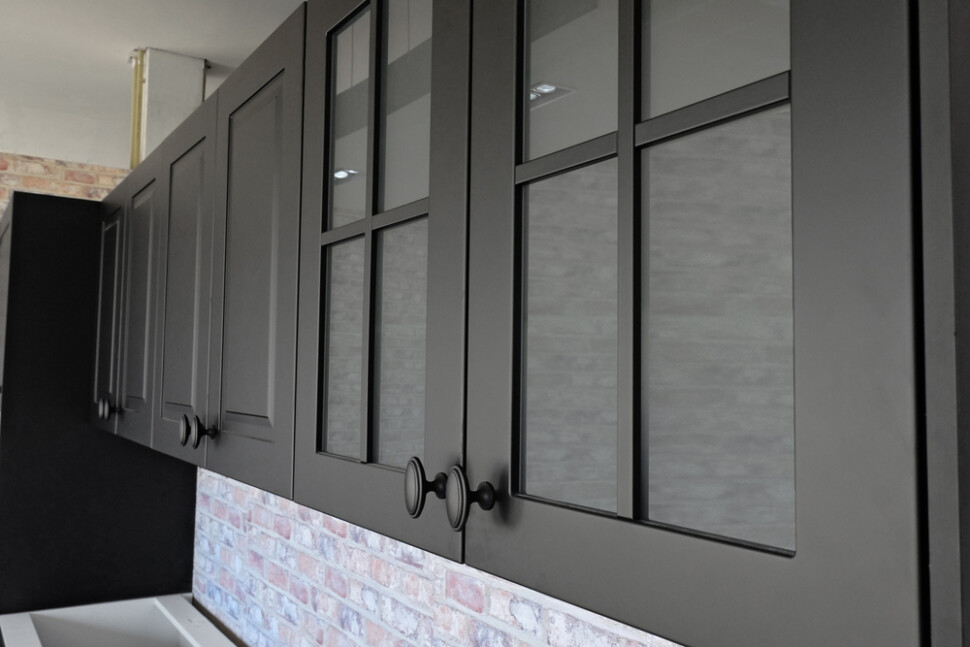
Pros
MDF cabinets are less expensive than solid wood cabinets, and they also offer a variety of decorative finishes to suit your taste. This can include wood veneers, laminate, or paint. It’s a versatile material that’s widely accessible and also lightweight.
This engineered product is economical because it can be constructed with leftover wood fibers that are a byproduct of other wood manufacturing processes. This means that it’s taking materials that would otherwise go to waste and turning it into useful products. Every time you look at your kitchen cabinets you will be reminded of the economical choice you made of turning a waste product into something useful!
Cons
The cons of MDF include that it doesn’t provide the best screw-holding properties and it cannot be sanded and refinished. It is also highly susceptible to water damage, as any type of moisture will cause the material to swell and be ruined. This would ruin the appearance and integrity of your MDF cabinets.
In addition to understanding the pros and cons of each of these types of kitchen cabinet materials, explore the top kitchen cabinet trends of 2023 for more ideas!
Find the Best Types of Kitchen Cabinet Materials at Elevations by Standard
Whether you’re a homeowner or professional, Elevations by Standard is here to help you with all of your kitchen remodeling needs. We proudly offer leading brands in the industry (Gallery, Merillat™, Omega®), so whichever type of kitchen cabinet materials you choose, you can be confident in your decision. Contact us today to sample different materials, ask questions, request a quote, and more.
